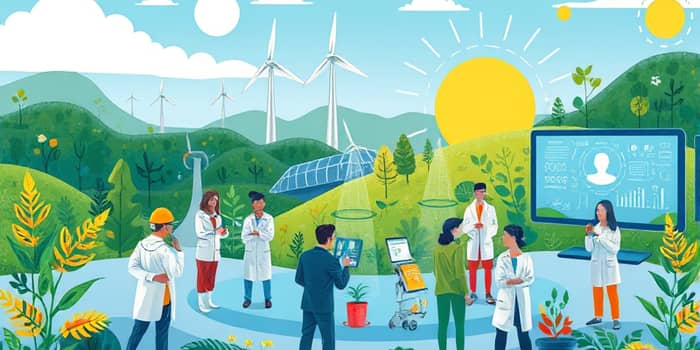
In 2025, the venture capital landscape is undergoing a profound transformation. New opportunities in health and green technology are redefining investor priorities and startup strategies alike.
The macroeconomic and strategic context of 2025 reflects a deliberate pivot away from traditional software investments. Geopolitical uncertainty, market maturation, and urgent climate and health challenges have prompted a fresh wave of capital allocation toward sectors with lasting global impact.
Recent data illustrate this shift in stark terms:
This data confirms a renewed willingness among investors to embrace longer development cycles and higher capital requirements for transformative solutions. In particular, hardware-driven innovations and bioscience breakthroughs are capturing more attention.
Alongside changing sector preferences, new investment models are gaining prominence. Notably, the rise of sector-specific microfunds with deep expertise is reshaping how capital is deployed. These smaller, domain-focused vehicles offer specialized support, bridging the gap between generalized funds and niche startups.
At the same time, venture capitalists are adopting a more disciplined approach. They emphasize rigorous due diligence and thorough market validation, moving away from the rapid-fire funding cycles that characterized the previous decade.
The health and biosciences sector is witnessing accelerated innovation in disease prevention, diagnostics, and care delivery. Digital health platforms, wearable monitoring, and AI-driven drug discovery are converging to form a robust ecosystem.
Key drivers include rising chronic illness burdens, environmental health risks, and a growing emphasis on personalized medicine. Investors are particularly drawn to integrated digital health delivery systems that promise scalable impact.
Climate tech has evolved beyond mature renewables like solar and wind. Venture capital is now targeting hard-to-abate sectors where emissions reduction potential is greatest. Industrial decarbonization, carbon capture, utilization, and storage (CCUS), and green hydrogen projects have become focal points.
In China, for instance, energy-related climate tech investments surged from under 2% in 2018 to 22.2% in 2023. Globally, VC funds are prioritizing technologies with strong alignment to emissions reduction targets and regulatory incentives.
Government initiatives such as the US Inflation Reduction Act have catalyzed capital flows, providing grants, tax credits, and loan guarantees for startups tackling critical climate challenges.
Several high-profile deals underscore the momentum behind convergent solutions at the intersection of AI, health, and sustainability. In Q1 2025, global AI funding reached $59.6 billion, representing over 53% of total VC capital. Yet, the most celebrated deals involve hybrid applications:
These transactions signal investor confidence in multifaceted technologies that address both health and environmental outcomes concurrently.
For startups and venture investors, the shifting landscape presents both promise and pitfalls. On the opportunity side, the convergence of digitalization, bioengineering, and advanced materials opens pathways to transformative products and services.
However, several challenges temper enthusiasm. Scaling beyond pilot phases in climate tech requires massive capital, often straddling the tension between innovation and deployment. In health, regulatory hurdles and data fragmentation can slow commercialization.
To navigate this evolving environment, founders and investors must adopt adaptive strategies. For startups, crafting a clear impact thesis and demonstrating regulatory readiness will be critical to securing funding.
Investors, meanwhile, should cultivate cross-sector partnerships and leverage domain expertise to de-risk complex ventures. Establishing alliances with governments, insurers, and research institutions can accelerate commercialization and build resilience against market fluctuations.
Key recommendations include:
The venture capital shift toward health and green technology reflects a broader recognition of global priorities. By focusing on high-impact, hard-to-abate sectors and embracing collaborative investment frameworks, the VC ecosystem can drive meaningful progress.
For entrepreneurs, the mandate is clear: develop solutions that are not only innovative but also resilient and scalable. For investors, the challenge lies in balancing portfolio diversification with deep sector specialization.
Ultimately, the next decade will be defined by ventures that transcend traditional boundaries—melding hardware, software, biology, and policy to create durable value. As capital flows realign with pressing global needs, health and green tech stand at the forefront of a more sustainable and healthy future.
References













